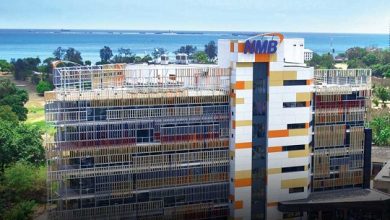Tanzania’s titans: NMB profits, CRDB assets

DAR ES SALAAM: TANZANIA’S banking sector is fiercely contested by two dominant players: CRDB Bank and NMB Bank. CRDB remains the largest lender by assets, while NMB leads as the most profitable institution in the country, according to their 2024 financial results.
A closer examination reveals distinct strengths and growth trajectories for these two financial giants. NMB made a pre-tax profit of 931bn/- in 2024, a substantial 20 per cent increase from 774.8bn/- in the previous year.
This growth was primarily driven by increased net interest income stemming from a larger loan portfolio and effective management of funding costs, coupled with higher non-interest income from fees on digital transactions and trade finance activities.
CRDB also showed strong earnings, generating a pre-tax profit of 778bn/- in 2024, a 30 per cent rise from 599bn/-in 2023.
CRDB’s impressive pretax profit growth was largely fueled by significant expansion in its loan book across both corporate and retail segments, coupled with increased income from its growing agent network and digital banking platforms. Prudent cost management also contributed to this strong performance.
ALSO READ: NMB backs 39th ALAT AGM with 170m/-
This rapid pre-tax profit growth at CRDB suggests a potential narrowing of the profitability gap with NMB in the future, despite NMB’s current higher absolute figure.
Looking at after-tax figures, NMB reported a net profit of 646.89bn/-, surpassing CRDB’s 551.49bn/-, further cementing its position as the most profitable bank.
However, CRDB’s total assets reached a commanding 16.70tri/-, above NMB Bank’s 13.74tri/-, marking its dominance in terms of asset size.
The difference in growth rates suggests an interesting banking landscape in Tanzania. While NMB currently holds the profitability lead, CRDB’s faster growth indicates a strong upward trajectory. In terms of growth, CRDB demonstrated a more aggressive expansion in 2024.
Its net income grew by an impressive 30.43 per cent, outpacing NMB Bank’s still healthy 18.65 per cent increase. This trend was also evident in balance sheet growth, with CRDB’s total assets expanding by 25.35 per cent compared to NMB’s 12.77 per cent. Similarly, CRDB saw stronger growth in loans (22.69 per cent vs 10.27 per cent) and customer deposits (23.50 per cent vs 13.08 per cent).
These differing growth rates underscore the dynamic competition within the counry’s banking sector. Profitability metrics reveal a close comparison between the two banks.
While CRDB boasted a slightly higher Return on Average Assets (ROAA) at 5.10 per cent compared to NMB’s 5.00 per cent, both banks demonstrated strong efficiency in utilising their assets. A ROAA of around 5.0 per cent for both CRDB and NMB indicates that for every 100 shillings in assets they hold, they generated approximately Tsh5.10 and Tsh5.00 in net income, respectively.
This signifies a healthy level of profitability derived from their asset base. However, CRDB’s Return on Average Equity (ROAE) stood at a higher 27.70 per cent compared to NMB’s 25.00 per cent.
A higher ROAE for CRDB suggests that the bank is generating more profit for its shareholders relative to the amount of equity invested.
Specifically, for every 100 shillings of shareholder equity, CRDB generated approximately Tsh27.70 in net income, compared to NMB’s Tsh25.
This can be attractive to investors as it indicates a more efficient use of their capital to generate returns. Examining asset quality, both banks maintained a similar ratio of non-performing loans to gross loans at 2.90 per cent.
However, CRDB experienced a more significant increase in absolute non-performing loans and impairment losses during the year.
NMB Bank, on the other hand, saw a lower growth in non-performing loans and a slightly better coverage ratio, suggesting a potentially more conservative approach to managing credit risk.
Efficiency-wise, NMB demonstrated a lower noninterest expense to gross income ratio (38.00 per cent) compared to CRDB (45.90 per cent), indicating a greater efficiency in managing operating costs relative to income.
The 2024 financial results paint a picture of two powerful Tanzanian banks with distinct strategies and outcomes.
NMB leads in absolute profitability and operational efficiency, while CRDB commands the largest asset base and exhibits stronger growth momentum across key metrics, including a notable 30 per cent surge in pre-tax profit compared to NMB’s solid 20 per cent increase.
This higher profit growth at CRDB suggests a potentially more aggressive expansion strategy and could indicate a narrowing of the profitability gap with NMB in the future.
However, NMB’s established position as the most profitable bank, coupled with its superior efficiency, underscores its strong earnings power.
The differing growth rates highlight the competitive dynamics within Tanzania’s banking sector, with CRDB demonstrating significant upward momentum while NMB maintains its leading profitability.





